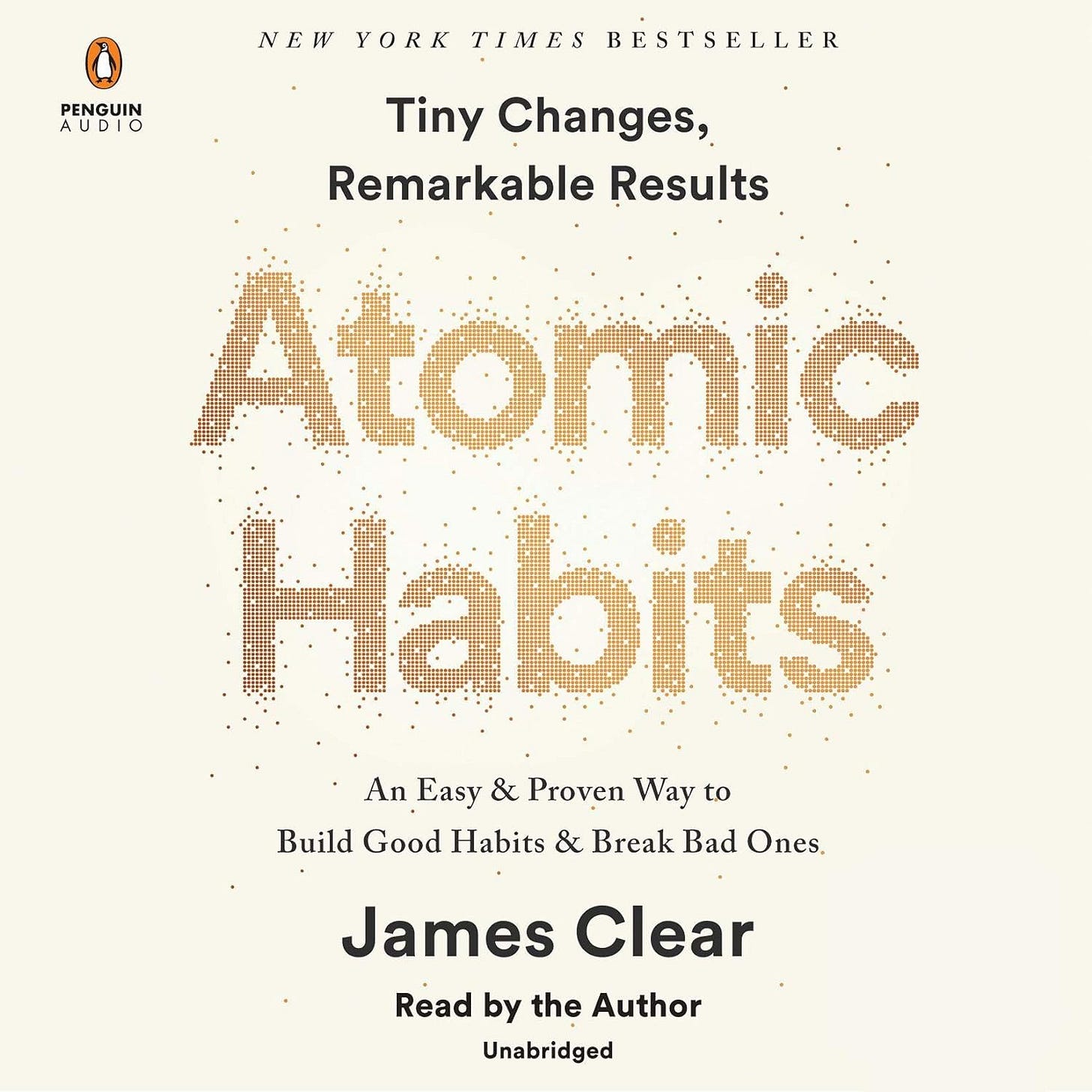Hello there! Matt here from MessageUp.
Switching from a weekly cadence to only writing these newsletters once each month was supposed to take the heat off, allowing me to focus on content for other channels. While that must have happened, the months seem to be flying by faster than ever! Further evidence of how our perception of time is warped by the metrics and deadlines we set. More on this topic in a moment…
In this newsletter, you’ll find:
A quick business update.
A discussion on finding balance between near term and longer term goals.
Summaries of our latest blog posts, the most recent of which discussed whether B2B content marketers are better off imitating others’ content, emulating others’ methods, or producing original material.
A book review and recommendation.
Three article reviews, covering creating your own B2B category, email marketing benchmarks, and whether being bold is a sound B2B marketing strategy.
To see more of our content, follow us on LinkedIn.
Cheers,
~ Matt
Business Update
With the summer doldrums well-and-truly setting in around these parts (115°F heat index, anyone?), we’re spending our time indoors, reflecting on an eventful first half of 2024 and laying plans for an even stronger second half.
Client work is running strong. We’re not seeing any signs of a slow-down across the industries our clients represent, despite the incessant (w)ringing of hands and alarm bells by pundits who expected interest rates to have dropped by now.
Content marketing remains mission critical. Despite—or perhaps we should say in spite of—the rise and rise of AI, the need for authentic content to help buyers understand and make good buying decisions has never been greater.
Broadening our offering to new channels remains a priority. We have parked the B2B Builders community rollout for now, but the idea definitely isn’t dead. Ditto our long-standing goal of creating an online academy for B2B leaders who want to master content marketing at their own pace. We’re experimenting with several fascinating—and fast developing—AI-enabled course creation tools, and hope to land on a way forward within the next few months.
Hopefully your 2H24 is looking just as interesting and productive?
Or are you feeling a little anxious that half the year has elapsed but you’re nowhere close to halfway meeting your annual targets?
My mid-year review started me thinking about goal setting and the way it can positively and negatively impact our attitudes and performance…
Balancing Near-Term and Long-Term Goals
It’s a classic glass half full or glass half empty situation. Your views on crossing the midway point of 2024 will be heavily skewed by how January through June has gone relative to your expectations and goals.
If you’ve had a stellar first half, you’re probably feeling bullish about carrying that momentum into the rest of the year and beating your full-year targets. The end of the year—and perhaps a bonus—can’t come soon enough.
Conversely, those for whom the first half has been underwhelming are likely feeling anxious about having to turn things around or risk missing their year end targets rather badly. The end of the year is looming ominously.
The former creates a risk of over-confidence—especially if the first half has benefitted from some lucky breaks that might not get repeated.
The latter can lead to demotivation and a growing feeling of hopelessness that renders year-end goals and incentives ineffective.
One way to avoid both is to set shorter-term goals that reflect the current state of affairs and help to chart the best possible course forward.
The end of the year is six months away. That’s plenty of time in which to course correct or to cement and build upon first half gains.
It’s also plenty of time in which to procrastinate, get complacent, or screw things up.
As I’ve written before in these pages, I’m a big fan of Geno Wickman’s book, Traction, and the Entrepreneurial Operating System (EoS) that it teaches.
One of my favorite parts is the structured approach Wickman recommends for setting long- and short-term objectives, and for the review cadence that helps you stay on top of them.
For example, during his time as a consultant, he has observed that teams tend to drift away from shared goals after about 90 days. So, a quarterly review is essential to bring everyone back together and refocus shared effort.
Personally, I find it helpful to have weekly, quarterly, and annual goals, each of which is managed differently.
Weekly goals are something I decide on a Monday morning (or Sunday, if I’m really on my game) and track using a Kanban board in Asana.
Quarterly goals are something I set at the beginning of each calendar quarter and track in a scorecard that I update weekly.
Annual goals are the product of strategy review and planning sessions, captured in what Wickman calls a Vision/Traction Organizer (VTO). I don’t find the name particularly inspiring but, in essence, it’s the spreadsheet that links near-term goals all the way to your long-term vision for the business.
What works for you might be different. It’s got to sync with your individual ways of working, thinking, and organizing.
But as I mentioned in the introduction, be cognizant of how the way you set and measure goals can warp your perspective on time and accomplishment.
Measuring things too frequently can lead to erratic over-reactions to the data and feelings of despondency when the numbers aren’t moving in the desired direction.
Tracking goals too infrequently can leave you with few options for corrective action if you discover too late that things have deviated from plan.
Or, taking the half-full perspective, you might miss an opportunity to double-down on something that has your business running ahead of plan.
The end of the year is, for most intents and purposes, an arbitrary line in the sand. The first day of next year will look a whole lot like the last day of this year.
But we need to drive a stake in the ground somewhere.
Think carefully about what you want your business—or your marketing initiatives, or your life in general—to achieve, and in what timeframes.
Yes, timeframes plural.
Goal setting isn’t entirely about setting long term targets and then chopping them into bite sized chunks over a series of weeks, months, or quarters.
Look for independent things to aim for at each of those horizons, while still tracking your longer-term objectives.
The end of the week is nigh. Seven days (or however many you count as productive toward your goals) isn’t a long time, no matter what your objectives.
The end of the month is nigh-ish. You can get a lot done in a month if you set your mind to it but, as my newsletter writing example demonstrates, that month will fly by if you’re not paying attention.
The end of the year is only nigh if you fail to plan the next six months carefully and lose the opportunity to take full advantage of them.
So, what do you have planned for the rest of the week, the balance of July, the third quarter, and the second half of 2024?
Recent Posts on The Framework Blog
Should B2B Marketers Imitate, Emulate, or Originate? (July 3, 2024)
As a resource-constrained B2B marketer, it’s tempting to imitate your competitors' ideas. After all, what's wrong with creating your own version of something that has worked well for them in the same market?
Or perhaps it’s better to emulate a successful marketer’s approach—either within your sector or one you’ve found on social media—without directly replicating the output?
This post examines the pros and cons of both approaches, and contrasts them with the far more resource-intensive process of creating your own original content.
The decision is not as straightforward as you might think, since there are times when each approach has its merits—but also times when they simply don’t work.
Building a High-Impact Marketing Technology Stack for a Growth Stage B2B Business (June 5, 2024)
Assembling the right marketing technology stack can be instrumental in today's fast-paced digital environment, but with an overwhelming array of available options, it can be hard to tell which tools are truly essential, and which can be added later.
This post outlines what we believe are the 10 most important tools a small company marketing team will need, along with some important features they should possess.
We also discuss the pros and cons of choosing integrated software platforms versus discrete best-in-class tools, and the strategic importance of investing in technology early in a company's life.
Book Report
Atomic Habits: An Easy & Proven Way to Build Good Habits & Break Bad Ones - James Clear (Print and Audiobook 2018)
This book has been on my TBR list for a while. I’m not sure who first pointed me to it but it has been recommended by several acquaintances and referenced in numerous other books that I’ve consumed.
Those small but regular nudges eventually prompted me to acquire it with an Audible credit and begin listening to it while exercising.
Ironically, that’s a great example of how atomic habits work.
Regular repetition of something small eventually leads to meaningful change.
James Clear is a recognized authority on the subject and this book articulates his four-part framework for developing good habits and breaking bad ones.
It contains so many great soundbites that I am doing the author and my readers a disservice by picking one, but here goes nevertheless:
“What gets fired, gets wired.”
In other words, repeatedly triggering a particular response in your brain leads to the development of a stronger and stronger synaptic connection.
Thus, developing habits is an innate process—something inherent to the way our brain works—that we cannot control.
What we can control are the stimuli to which our brain is exposed and, by so doing, the cycles of stimulus-response reinforcement that take place.
Remove the recurring stimulus (or reward) that led you to form a bad habit and you can break it more easily.
Amplify the stimulus that triggers a good habit (as well as making it easier and more rewarding) and you’ll begin to build the new habit you desire.
A fascinating and highly recommended read that has the potential to positively impact many aspects of your personal and professional life.
What We’ve Been Reading
This months articles are distinctly different from on another. A tactical guide to creating your own product category. A research report on email marketing statistics. And, an opinion piece on taking a bolder approach to B2B marketing.
Hopefully, there’s something here that is relevant and helpful for you.
Creating a B2B Category—Not for the Faint of Heart
Kristin Russel, Forbes Communication Council, June 2024
Many of our clients have their hearts set on carving out a niche for themselves in the market—a category of one that separates them from the competition.
But, as Kristin Russel, CMO at symplr, points out in this article, category creation is hard work. Not only do you have to educate the market about your brand, you have to teach them about a whole new category as well.
However, if you've got the resources and stamina, this article offers some tips on successful category creation.
49 Email Marketing Statistics in 2024
Katherine Haan, Forbes Advisor, June 2024
Statistic number 50 might be: there are too many listicles about channel statistics!
However, this piece provides some useful benchmarks on what to expect from a B2B email campaign, including open rates, click through rates, device usage, and the use of AI in email marketing campaigns.
Boring to Bold: How B2B Marketing Creativity Transforms Brands
Jason Ball, CMS Wire, June 2024
This article takes on an interesting question: Is being bold a risky strategy in the traditionally staid world of B2B marketing?
The author concludes that embracing a bit more creativity is good for B2B results, and he digs into what that might mean in terms of cutting through the noise, making a strong connection with your audience, and using creative marketing as a catalyst for change.








